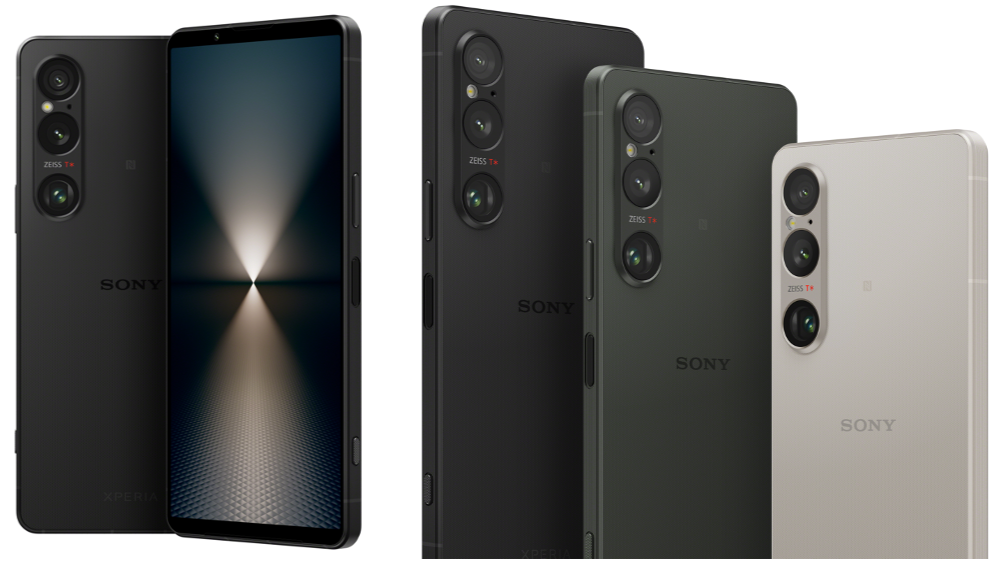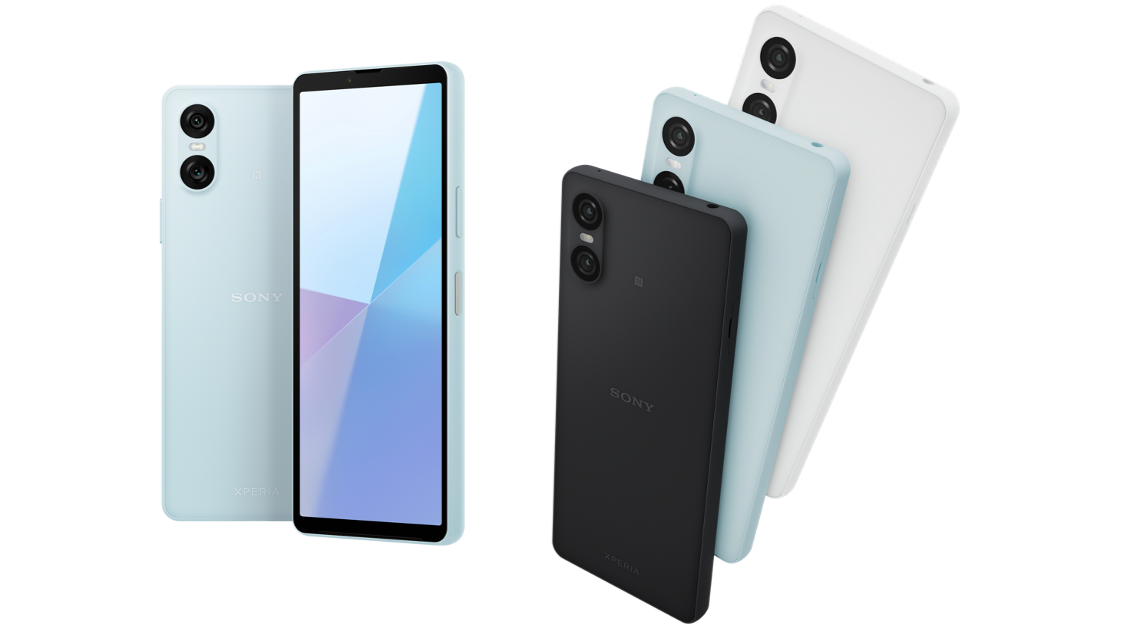
Sony has unleashed its latest pair of Xperia smartphones for 2024. It is continuing the Roman numeral naming convention with the Xperia 1 VI and Xperia 10 VI – however, there's a controversial change on one of these devices that is sure to upset movie fans.
Starting with the Xperia 1 VI, this handset is a follow-up to the excellent Xperia 1 V from last year. This is Sony's flagship device in the new Xperia lineup. It has the Qualcomm Snapdragon 8 Gen 3 chipset inside and 12GB RAM, with either 256GB or 512GB of internal storage. This is the same specification as the Samsung Galaxy S24 Ultra which was a mighty powerful device crammed full of features; so expectations are high for this new handset.
The camera has also received an upgrade over last year's model. The Exmoor T module that made its debut on the Xperia 1 V returns, with a new 7.1 times optical zoom lens alongside it, and a new telephoto macro mode for capturing subjects up close. The Pro Camera and Pro Video apps have also been consolidated into a single app, meaning you can access professional shooting modes in one convenient place.
Sony is also touting the power of its AI integration, with new human pose estimation technology, which will track a subject with points attached to each part of their body and allow for smoother tracked video, as well as more accurate focus. Much like the Galaxy S24 Ultra, the Xperia 1 VI will now apply HDR to your viewfinder within the camera apps, meaning you will be able to preview exactly what your camera will capture.
It is with the display that things get controversial. As the rumours foreshadowed, two iconic aspects of the Xperia 1 series smartphones have been removed from this generation. First is the 4K resolution, which isn't immediately a problem – very few apps support 4K streaming on mobile. However, Sony has instead opted for a Full HD+ (2220 x 1080) display, which makes this downgrade feel especially jarring; many other handsets use a Quad HD display (2560 x 1440). Sony highlights a few benefits of dropping this display resolution down to 1080p though – namely better battery performance and display brightness.
Next to go is the 21:9 aspect ratio. Sony is now using a more conventional 19.5:9 display on the 1 VI. The 21:9 display was a unique feature on the Xperia phones which made them ideal for watching movies, as content would fill the screen without any black letterboxing bars. The more commonly used aspect ratio (also used on the Samsung Galaxy S24 Ultra, once again) will probably make day-to-day usability better, as the tall and skinny screen wasn't without its flaws.
Thankfully, it's by no means all bad news when it comes to the display. The 6.5-inch screen is a "new and smarter OLED display" according to Sony, and it has Bravia pedigree to back it up. Sony claims that the display on this smartphone is "powered by Bravia", meaning Sony's TV division may well have had a hand in tweaking the performance. Sony claims that the built-in AI remastering feature will improve colour, contrast and clarity on both your own videos and on streaming services.
It is also 50 per cent brighter than the Xperia 1 V for enhanced outdoor viewing and it has a variable refresh rate from 1Hz to 120Hz; that's quite the step up, so we look forward to seeing how this new model compares with its predecessor.
Thankfully, there are far fewer compromises where sound features are concerned. The Xperia 1 VI has a new full-stage stereo speaker system, which pairs a symmetrically placed loudspeaker and earpiece for a more balanced performance and less distortion at higher volumes. And we are delighted to see that Sony is keeping the headphone jack alive for yet another year, although Bluetooth audio with LDAC is also supported if you prefer to use wireless headphones. Dolby Atmos is also on board if you want to take advantage of the immersive format for watching movies or streaming music from Tidal, Apple Music or Amazon Music Unlimited.
Design-wise, Sony is keeping things familiar, as the Xperia 1 VI looks nearly identical to the model it's replacing. Internally it has the same 5000mAh battery which Sony claims will last for two days, and on the outside, the textured back panel and ribbed side rails return which is a plus in our books. It even comes in the same three colours as the Xperia 1 V – Black, Platinum Silver and Khaki.
The Sony Xperia 1 VI goes on sale in early June, and it will cost around £1299 – which is the same price the Xperia 1 V launched at. As is the case with its predecessor, there are no plans to launch it in Australia or the US.

Moving away from the flagship space and looking at Sony's new budget offering, the Xperia 10 VI has rather large shoes to fill. The last two iterations of this device earned themselves What Hi-Fi? Awards for best smartphone under £500, so all eyes are on the Xperia 10 VI to deliver an equally good, or ideally an even better, AV experience.
A fair few features are cut back from the Xperia 1 VI, including the metal and glass construction. Instead, the new Xperia 10 features an all-plastic build, with a translucent back panel and smoothed-out camera module. It's also a touch heavier than its predecessor, weighing 164g up from the Xperia 10 V's 159g weight. It will launch in three finishes: Black, White or Blue.
As expected, camera upgrades are at the forefront of this new model. Sony has included three new focal lengths to the dual camera, meaning one lens has been dropped from last year's model. There are a few new software features to compensate though, including automatic camera modes and colour settings, as well as a clever video editing app that allows you to tweak a video for social media in around a minute – both tools here are powered by Sony AI.
Sony has opted for a particular strategy for the Xperia 10 VI's display. While the 21:9 has been dropped on the Xperia 1 (arguably the more enthusiast-focused device), the aspect ratio has been retained on the cheaper handset. The Xperia 10 VI has a 21:9 OLED screen, which Sony says is brighter this year, although it's still tipped to be 1080p and 60Hz. It is a Triluminous Display for mobile, which Sony claims will leverage "technology cultivated for Bravia TVs", so picture performance expectations for this budget handset is high.
The improved stereo speakers from the last model return, although Sony claims they are louder this year. We hope Sony has addressed the issue that means the Xperia 10's frame rattles and vibrates when the speakers are in use, although most people should stick to headphone audio on this device anyway. Once again the headphone jack returns, and wireless audio is supported over Bluetooth with LDAC support.
Internally, the Xperia 10 VI has a few surprises too. Thankfully, Sony has upgraded the processor, using the Snapdragon 6 Gen 1 chip inside the Xperia 10. This won't be a life-changing update over the Snapdragon 695 5G from the previous two generations, but the underpowered internals of the Xperia 10 V were an issue so we are glad to see it addressed. Sony is once again touting a two-day battery life on this phone much like its more expensive counterpart.
The Xperia 10 VI launches in mid-June, and it will cost £349 – the same price as its predecessor. Unfortunately, it will not launch in the US or Australia, much like nearly all of the recent Xperia handsets.
MORE:
Read our full Sony Xperia 5 V review
Check out our picks for the best Android phones
And the best smartphones







